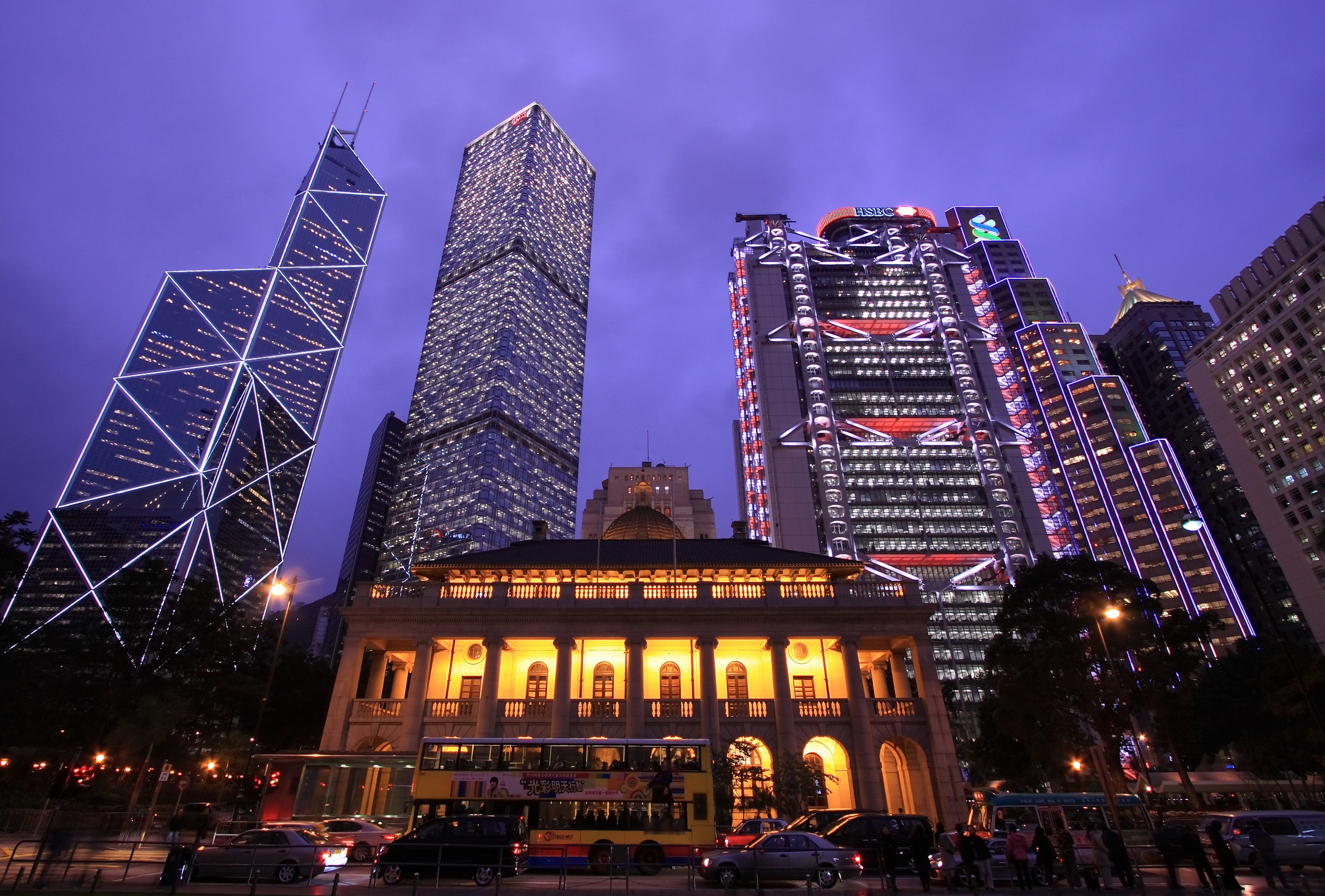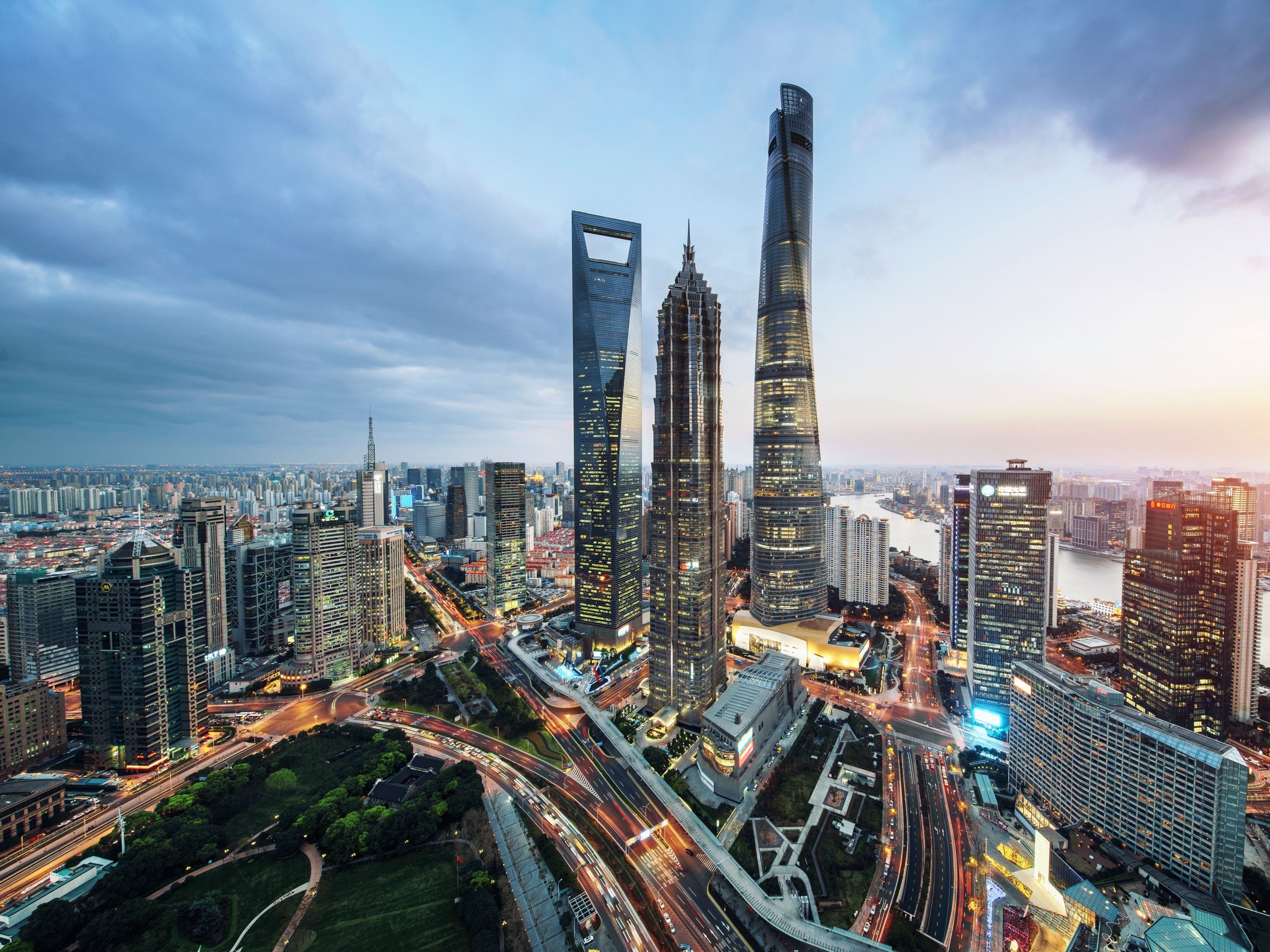Hyper-dense Hong Kong, home to 7.4 million people, boasts the largest collection of high-rise buildings on Earth—many of which have been designed by world-renowned architects. The neighboring Central and Admiralty districts, in particular, have been a magnet for celebrated names thanks to a prime location in the heart of the city’s commercial and civic center, just steps from glittering Victoria Harbour.
Within a few blocks, you can see Sir Norman Foster’s HSBC Headquarters, IM Pei’s Bank of China and Paul Rudolph’s Lippo Centre, to name a few—all built during an economically robust time for the city. In the 1980s, business was booming, and Hong Kong’s image as an international hub was coming into focus in the lead-up to the 1997 handover to China.
During this time of great change, developers invited leading international architects to transform the skyline and reflect Hong Kong’s rise to the global stage. Transform the cityscape they did, with record-setting structures harnessing the latest technologies and, in most cases, traditional feng shui principles (an ancient Chinese practice intended to harmonize and improve the energy in our physical environments).
While exploring Central, Hong Kong Island’s core business district, and neighboring Admiralty, just to the east along the harbor, you can appreciate these architectural masterpieces and more on the way, including The Henderson, a nature-inspired tower by Zaha Hadid Architects that’s set to complete in 2023.
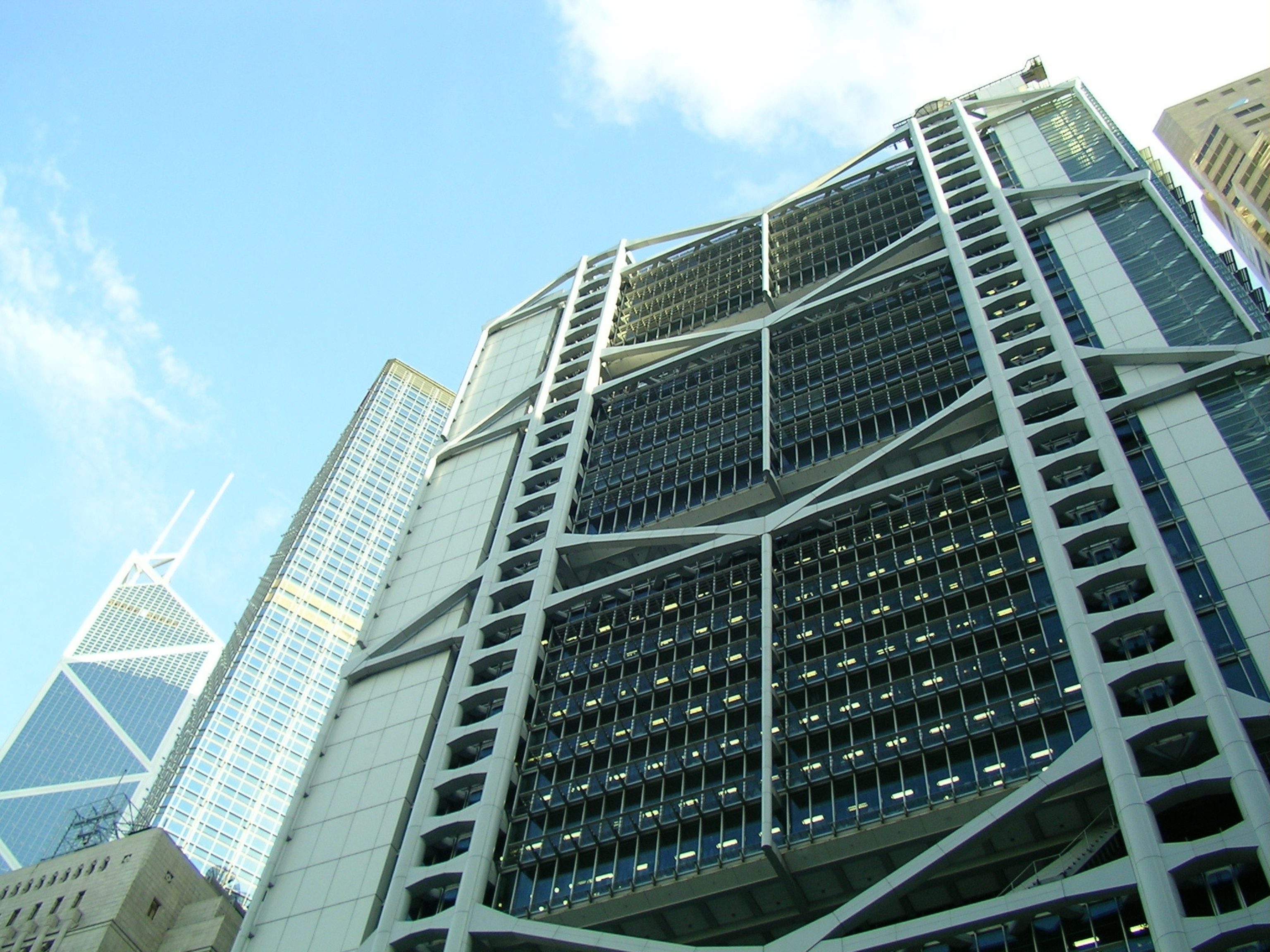
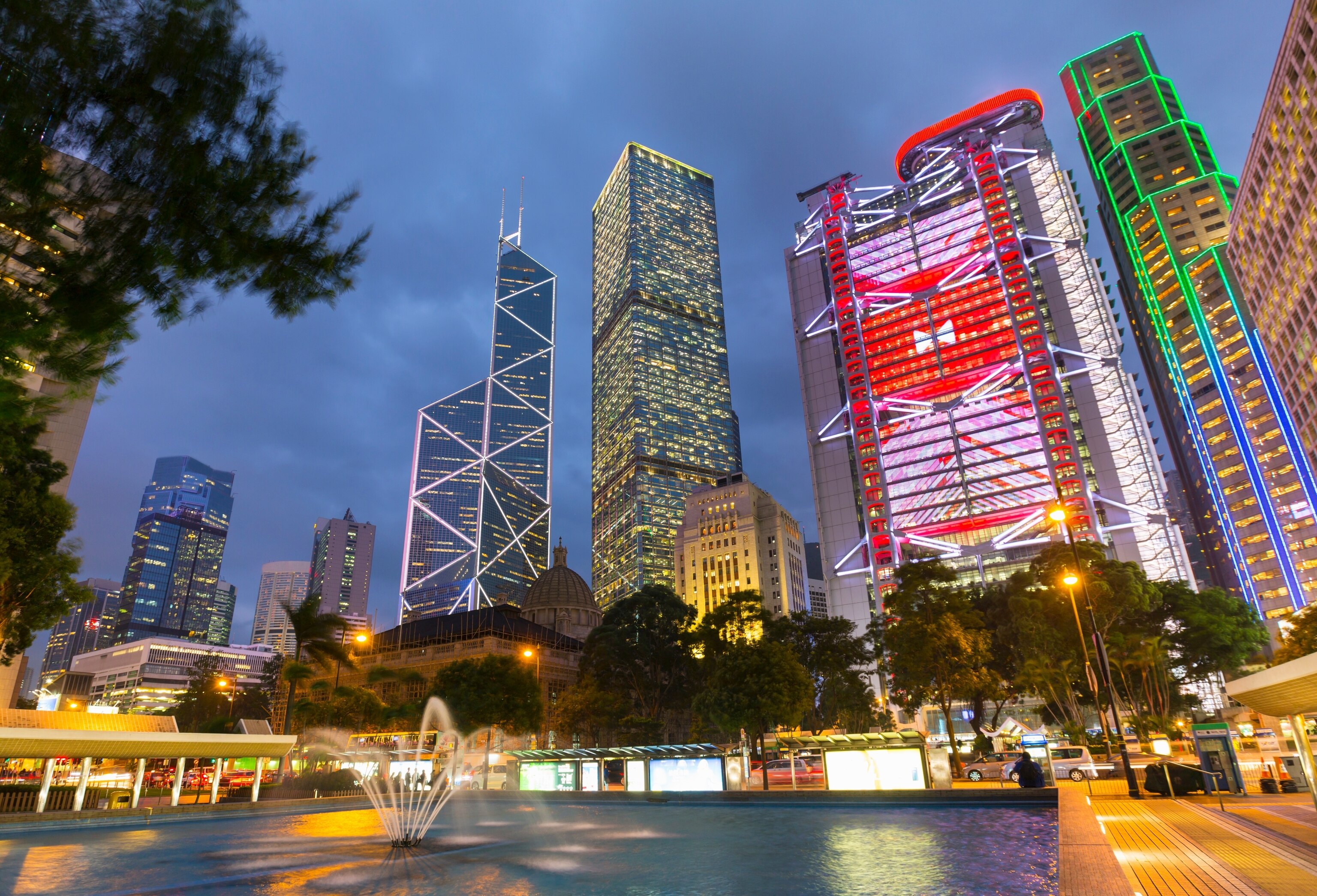
HSBC Headquarters Building (1985)
As the epicenter of Hong Kong business, shopping, dining, nightlife and art, Central is naturally one of the first stops on most travelers' itineraries. This buzzing district offers a lesson in contrasts: bustling markets in the laneways abut sleek galleries, no-frills cha chaan tengs (a Hong Kong-style diner) rub shoulders with Michelin-starred restaurants, Edwardian low-rises neighbor modern towers.
But few landmarks have come to represent the area quite like the HSBC tower. In 1979, the Hongkong and Shanghai Banking Corporation launched an international design competition for its ultra-ambitious new headquarters in Central.
The bank wanted to send a clear message of confidence in the city by constructing “the best bank building in the world”. Foster + Partners, headed by architect Sir Norman Foster, won the competition with an out-of-the-box idea to build a modular, prefabricated steel structure with three individual towers connected by steel bridges and a 10-story atrium.
With a budget of roughly US$667 million in the day’s currency, the British visionary had the modular pieces constructed in the US, Japan and the UK before shipping them to Hong Kong for assembly. In addition to reinventing the conventional office tower, Foster’s 587-foot-tall structure also put the city on the map as a destination for iconic architecture.
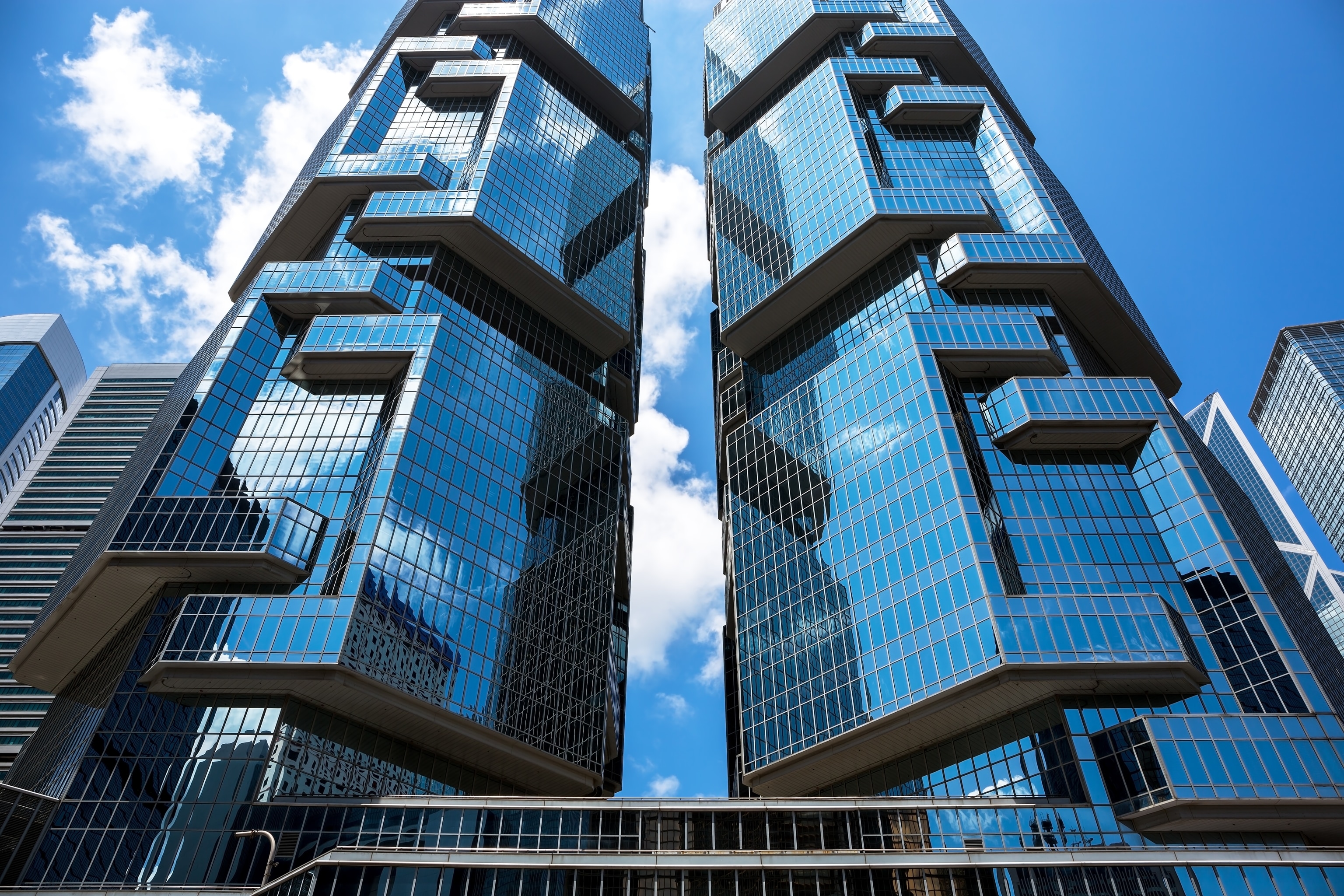
Lippo Centre (1988)
You wouldn’t know it, but the Victoria Harbor waterfront once reached all the way to Queen’s Road, the island’s main east-west artery, back in the 1800s. Following extensive land reclamation projects throughout the last two centuries, Hong Kong extended the buildable area by 6 percent to enable commerce to flourish but pushed the harbor north little by little.
While the harbor shrank, the urban environment expanded, making way for new buildings, including the distinctive Lippo Centre. Hop off the city’s historic double-decker tram by Chater Garden—a serene public park full of water features and palms—to see this unique structure gleaming across the street.
Originally known as the Bond Center, the double-office tower is the work of the late Paul Rudolph, a leading American architect known for his modernist style. Highly reflective and asymmetrical, this pair of hexagonal high-rises measure 48 stories and 44 stories, respectively. But what’s most fascinating are the towers’ raised geometric facades, which are said to look like koalas hugging tree trunks.
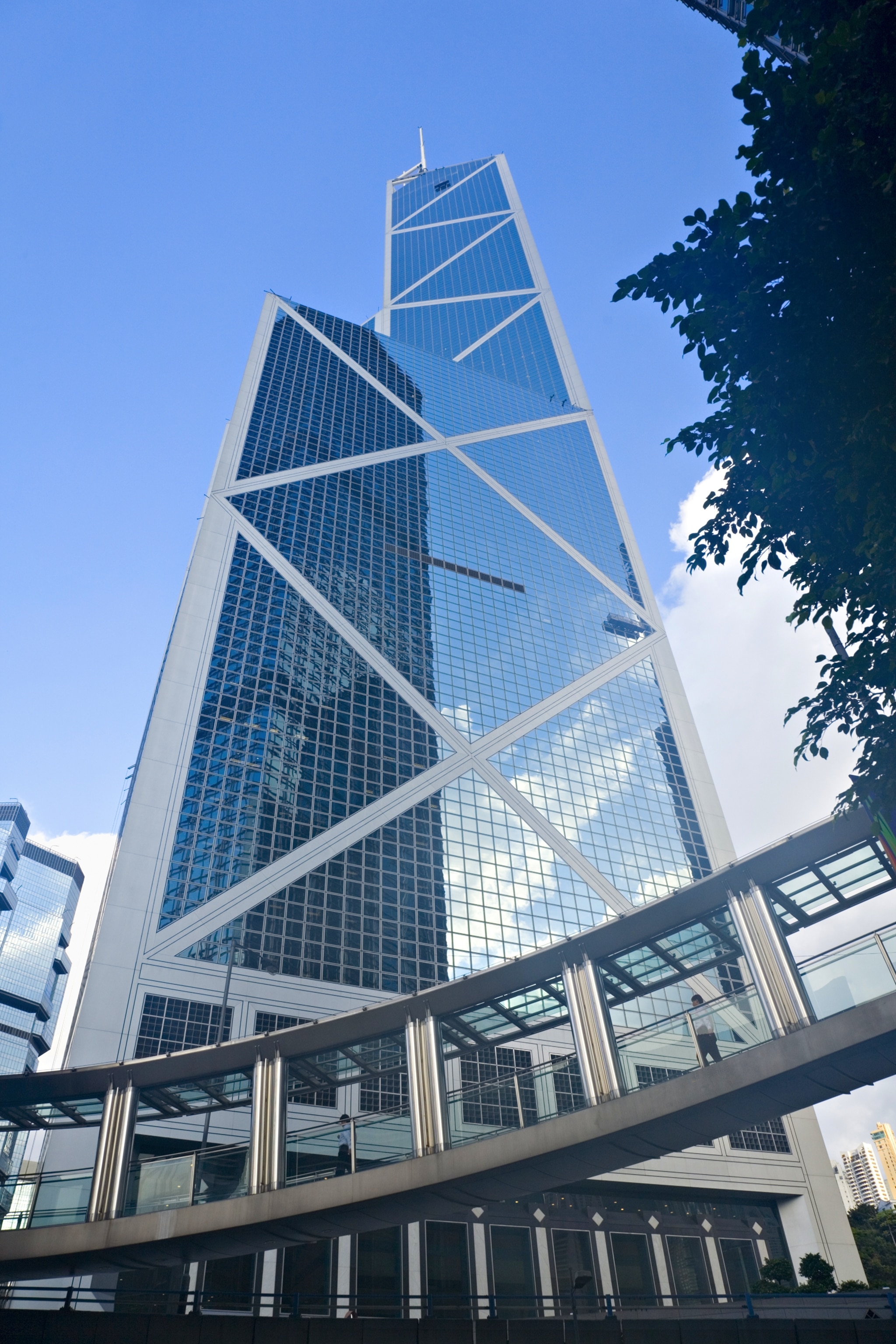
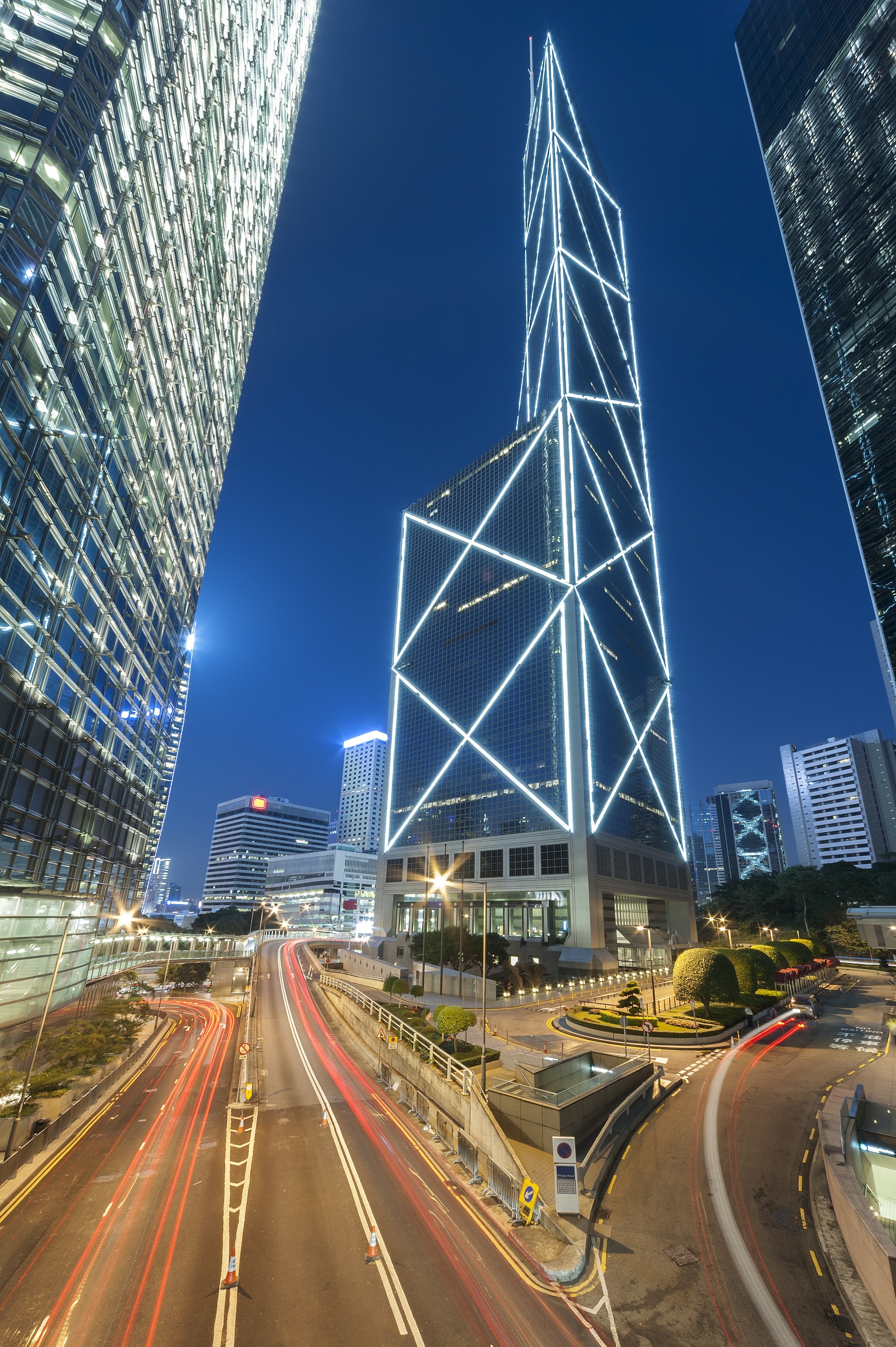
Bank of China Tower (1990)
In between Chater Garden and the Peak Tram station—a funicular rail that has been chugging up to The Peak mountain since 1888—you can’t miss the Bank of China Tower (BOC Tower). Prolific architect IM Pei completed work on the Louvre Pyramid in Paris and the Meyerson Symphony Center in Dallas just months before debuting this inimitable structure in Hong Kong. Although the project had a relatively small budget of US$130 million and a less-than-ideal trapezoidal plot on a slope in a typhoon zone, Pei set his sights for the new BOC Tower high—literally.
The resulting 1,205-foot-tall tower shattered records at the time and became an instant landmark as the first tower over 985 feet (300 meters) outside North America. But its cloud-piercing height isn’t the only feature of interest: A vision of urban energy, expansion and geometry, the origami-like BOC Tower was designed to resemble a flourishing bamboo shoot, symbolizing prosperity, vitality and China’s emergence as a notable player in international finance.
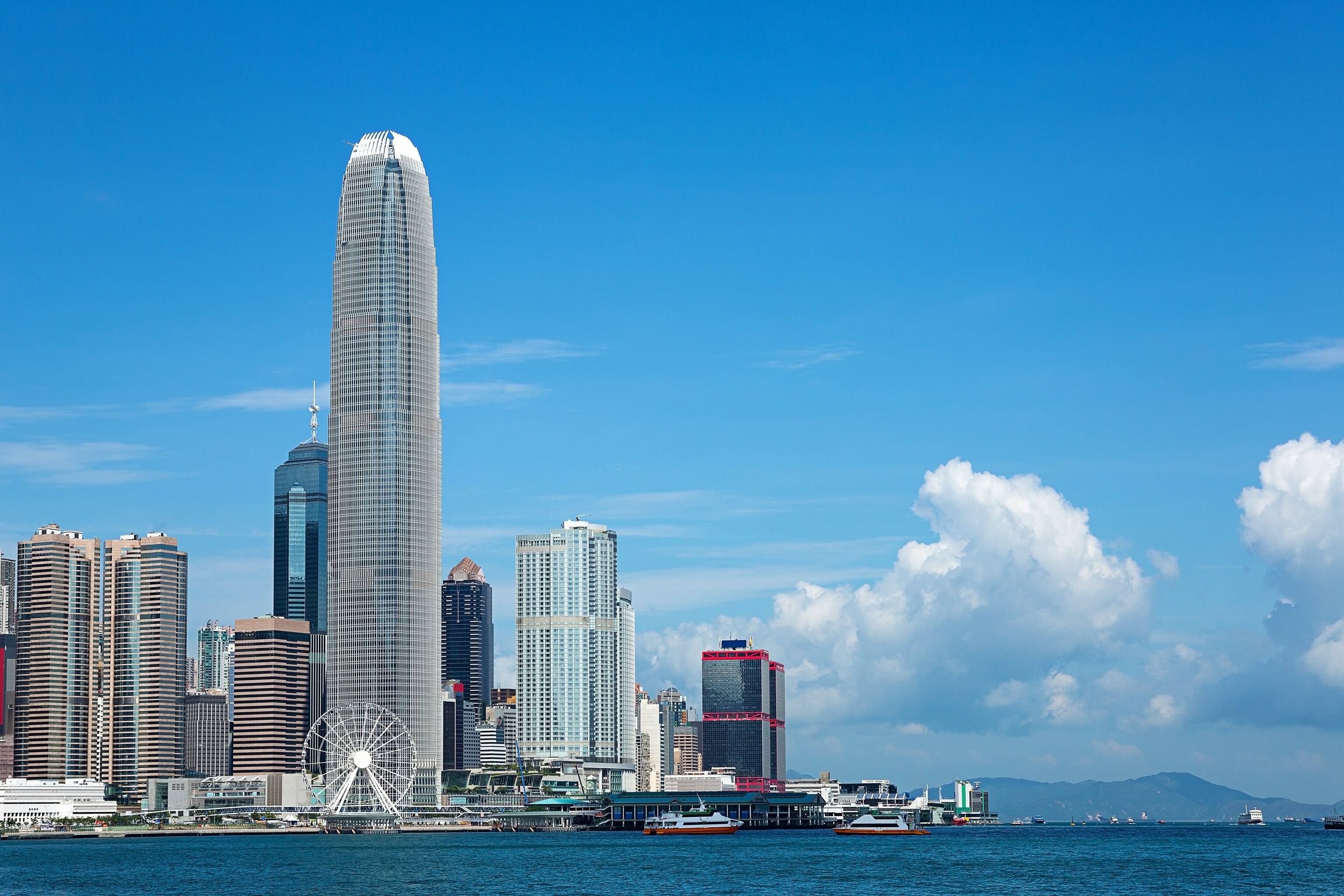
Two International Finance Centre (2003)
On a clear day, you can see straight across Hong Kong from the stratospheric offices in Two International Finance Center (2IFC), which Henderson Land, a leading property development group in Hong Kong, helped develop. Directly below, Star Ferry careens across the harbor and the little lanes of Central seem all the more infinitesimal. To the northwest, the new M+ Museum of visual arts and the grand Palace Museum stand proud in the West Kowloon Art District, while the Eight Mountains of Kowloon loom powerfully in the distance.
Designed by the late César Pelli, the celebrated Argentine-American architect behind the Petronas Twin Towers in Kuala Lumpur, the 1,352-foot tower was the tallest in the city upon its completion. Still today, the tower’s graceful, tapered shape remains a welcoming beacon to travelers at the entrance of the harbor as well as a testament to Hong Kong’s economic aspirations.

The Henderson (2023)
Continuing Hong Kong’s reputation for revolutionary architecture, Zaha Hadid Architects (ZHA) will debut The Henderson, its first commercial tower in the city, next year. Set to open on Murray Road in the heart of Central, the 36-story office tower will be connected to key MTR stations, namely Central, Admiralty and Airport Express. It will also be surrounded by major landmarks and parks, like Hong Kong Park, Chater Garden, Lambeth Walk Park, the 19th-century Flagstaff Museum of Teaware, the neoclassical Court of Final Appeal building and the soaring Bank of China.
Like so many of ZHA’s visionary projects, the office tower merges technology with nature. For instance, the tower’s organic, curving form resembles the blooming bud of bauhinia x blakeana (a city emblem) while sky gardens, terraces and mirrored double-curved glass facade—a first in Hong Kong—seamlessly connect the city’s built and natural environments. The ambitious design reflects Henderson Land’s aspirations for The Henderson to become a new icon of the city.
To find out more about The Henderson, an icon amongst icons, please visit the website: here.
